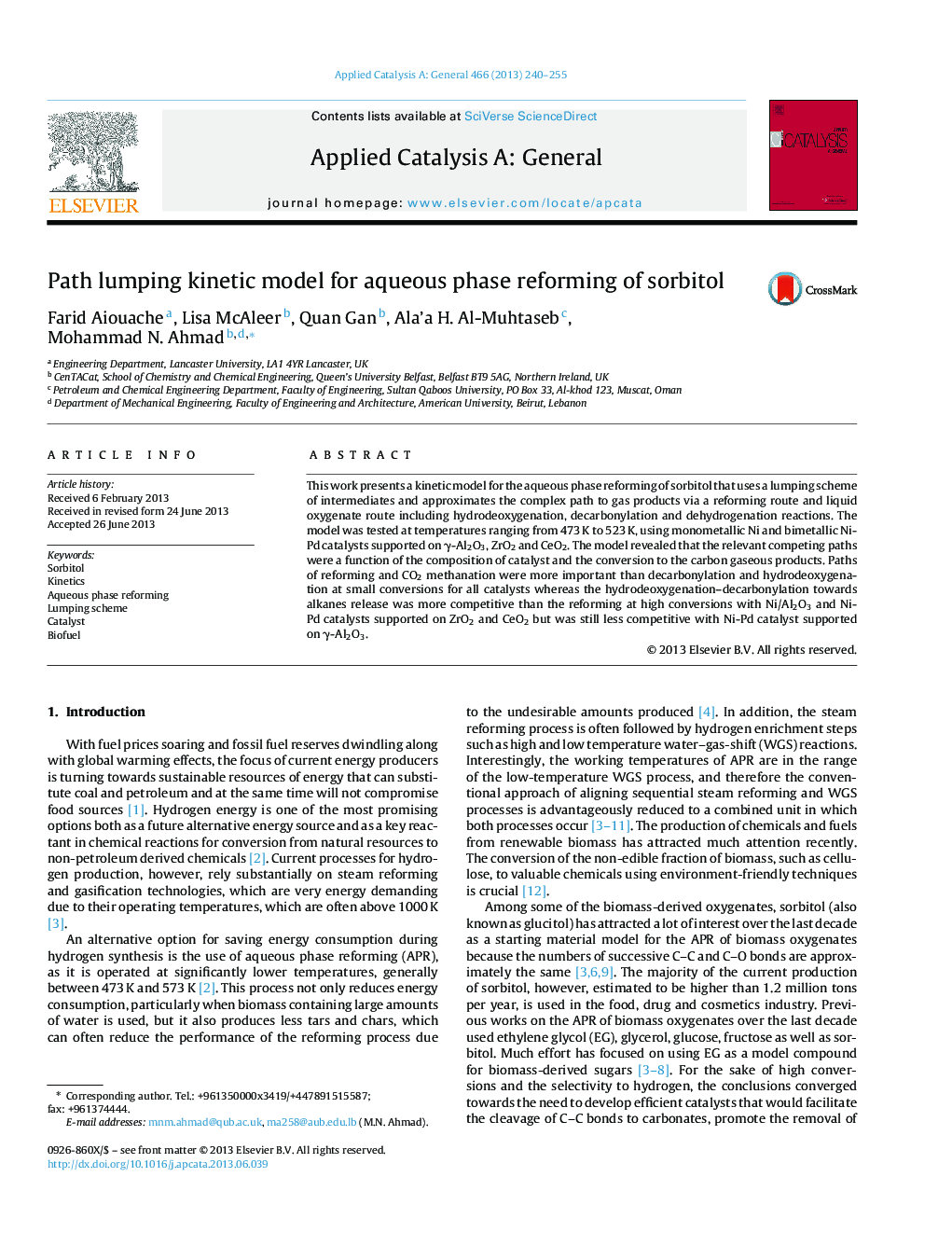| کد مقاله | کد نشریه | سال انتشار | مقاله انگلیسی | نسخه تمام متن |
|---|---|---|---|---|
| 40313 | 45849 | 2013 | 16 صفحه PDF | دانلود رایگان |

• Catalytic activity of mono- and bimetallic catalysts were investigated.
• Kinetic of the aqueous phase reforming of sorbitol using lumping scheme was modelled.
• Relevant competing pathways were influenced by the structure of the catalyst used.
• Paths of reforming and CO2 methanation were more important than decarbonylation.
• Paths such as reforming and CO2 methanation were most important for all catalysts.
This work presents a kinetic model for the aqueous phase reforming of sorbitol that uses a lumping scheme of intermediates and approximates the complex path to gas products via a reforming route and liquid oxygenate route including hydrodeoxygenation, decarbonylation and dehydrogenation reactions. The model was tested at temperatures ranging from 473 K to 523 K, using monometallic Ni and bimetallic Ni-Pd catalysts supported on γ-Al2O3, ZrO2 and CeO2. The model revealed that the relevant competing paths were a function of the composition of catalyst and the conversion to the carbon gaseous products. Paths of reforming and CO2 methanation were more important than decarbonylation and hydrodeoxygenation at small conversions for all catalysts whereas the hydrodeoxygenation–decarbonylation towards alkanes release was more competitive than the reforming at high conversions with Ni/Al2O3 and Ni-Pd catalysts supported on ZrO2 and CeO2 but was still less competitive with Ni-Pd catalyst supported on γ-Al2O3.
Figure optionsDownload high-quality image (159 K)Download as PowerPoint slide
Journal: Applied Catalysis A: General - Volume 466, 10 September 2013, Pages 240–255